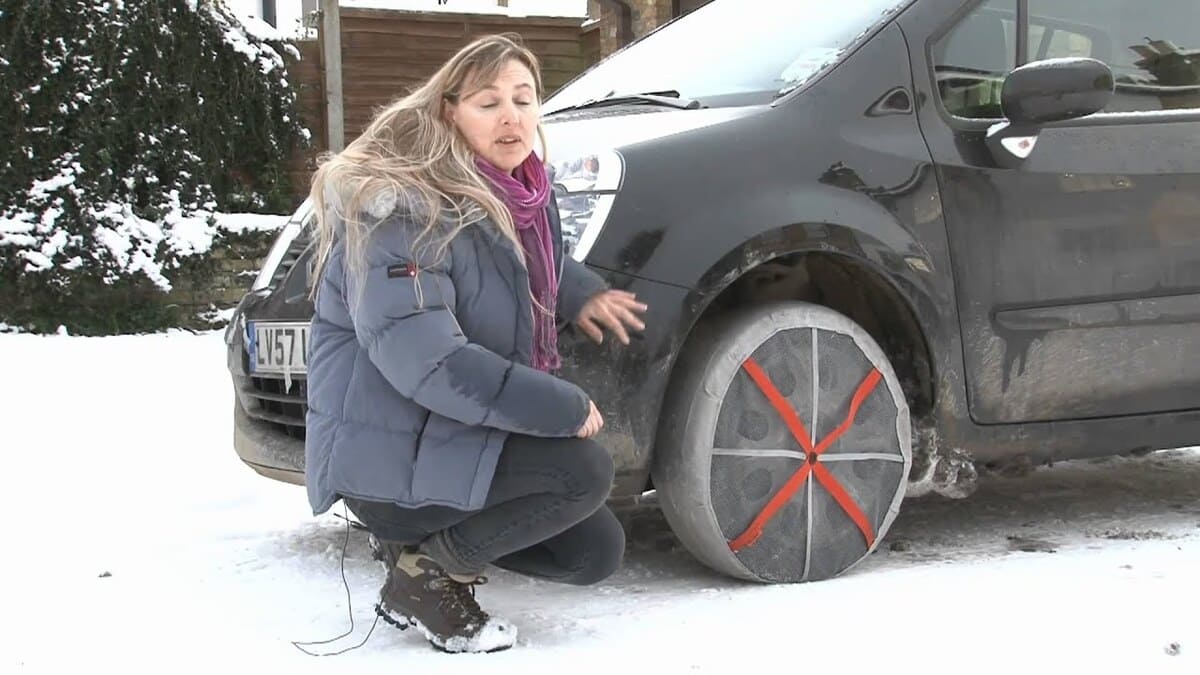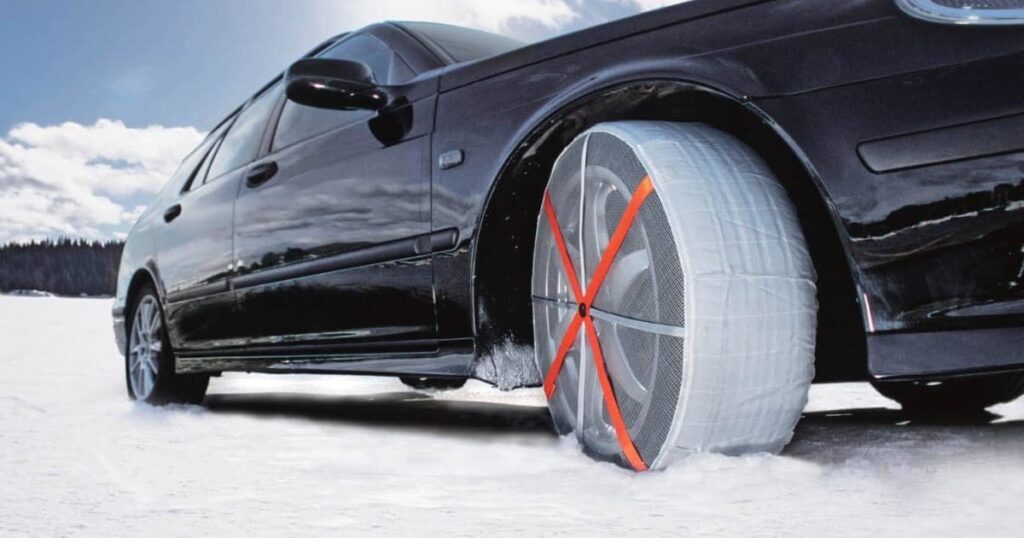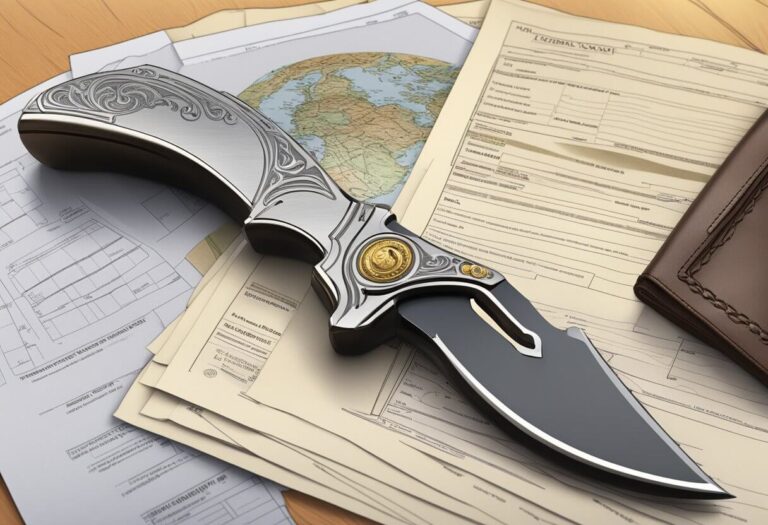Are Snow Socks Legal in California?

Are you planning a trip to the snowy mountains of California and wondering if snow socks are a legal and viable alternative to traditional tire chains? As a California resident who has experienced the unpredictable winter weather firsthand, I can attest to the importance of having the right traction devices to ensure safe driving. In this guide, we’ll explore the ins and outs of using snow socks in the Golden State, including the specific requirements and regulations you need to be aware of. We’ll also cover other approved traction devices, so you can make an informed decision and hit the roads safely.
The short answer is yes, snow socks are legal in California, but you need to know specific requirements and regulations. We’ll cover everything:
What are Snow Socks?
Snow socks, also known as tire socks or textile traction devices, are fabric-based alternatives to traditional metal tire chains. These lightweight and easy-to-install devices are designed to provide additional traction on snow and ice-covered roads, without the hassle of putting on heavy chains.
Unlike chains, snow socks simply slip over your tires, creating a textured surface that helps increase grip and reduce the risk of sliding or getting stuck. They are a popular choice for drivers who want a convenient and effective solution for navigating winter conditions, especially in areas where chain installation can be challenging or time-consuming.
Are Snow Socks Legal in California?
Yes, snow socks are legal in California, but they must meet specific requirements set by the California Department of Transportation (Caltrans) to be considered a valid traction device.
According to the California Vehicle Code (CVC) Section 605, tire traction devices, including snow socks, must be “constructed and assembled to provide sufficient structural integrity and to prevent accidental detachment from vehicles.” Additionally, they must bear a permanent impression indicating the name, initials, or trademark of the manufacturer or assembling company, as well as the country of origin.
Caltrans has approved several brands of snow socks that meet these requirements, including the popular AutoSock brand. As long as your snow socks are from a Caltrans-approved manufacturer and are properly installed, you can use them as an alternative to traditional tire chains when chain controls are in effect.
Types of Traction Devices Approved for Use in California
In addition to snow socks, there are several other types of traction devices that are legal and approved for use in California, including:
Tire Chains
Tire chains are the traditional and most widely recognized form of traction device. They are made of metal links that wrap around the tire, providing excellent grip on snow and ice. Chains are often considered the most effective option for severe winter conditions, but they can be more difficult to install and may be prohibited on certain vehicles due to clearance issues.
Cable Chains
Cable chains are a lighter and more flexible alternative to traditional tire chains. They are made of metal cables and are generally easier to install than standard chains. Cable chains are also a legal traction device option in California, as long as they meet the requirements set by Caltrans.
Studded Tires
Studded tires are another legal traction option in California, but they are only permitted for use from November 1 to April 30 each year. These tires have small metal studs embedded in the tread, which provide additional grip on icy surfaces. However, studded tires are not considered a substitute for chains or other traction devices, and they must still be carried in your vehicle during chain control situations.
Understanding Chain Control Levels in California
In California, the severity of winter weather conditions is communicated through a system of chain control levels, known as R1, R2, and R3. These levels determine the specific traction device requirements for vehicles traveling in affected areas.
R1 (Chains Required)
During R1 conditions, chains or approved traction devices (like snow socks) are required on all vehicles, except for passenger vehicles and light-duty trucks under 6,000 pounds that are equipped with snow tires on at least two drive wheels.
R2 (Chains Required for 2WD)
When R2 conditions are in effect, chains or approved traction devices are required on all vehicles, except for four-wheel-drive or all-wheel-drive vehicles under 6,500 pounds that are equipped with snow tires on all four wheels.
R3 (Chains Required for All Vehicles)
In the most severe conditions, an R3 chain control is implemented, which means that chains or approved traction devices are required on all vehicles, without exception.
It’s important to note that the chain control level can change quickly, so it’s crucial to stay informed about the current conditions and requirements before and during your trip.
Choosing the Right Traction Device for Your Vehicle

When selecting the appropriate traction device for your vehicle, there are a few key factors to consider:
- Vehicle Type and Size: Ensure that the traction device you choose is compatible with your vehicle’s make, model, and tire size. Some devices may not be suitable for certain vehicles due to clearance or weight restrictions.
- Condition Severity: If you’re driving in severe snow or ice conditions, chains may provide more reliable traction than snow socks. However, snow socks can be a suitable option for lighter snow or packed snow conditions.
- Ease of Installation: Snow socks are generally easier to install than traditional tire chains, which can be a significant advantage if you’re not experienced with chain installation or if you need to put them on in challenging weather conditions.
- Durability: While snow socks are more lightweight and convenient, they may not be as durable as metal chains, especially if you plan to use them frequently or in very harsh conditions.
It’s always a good idea to check your vehicle’s owner’s manual and consult with the traction device manufacturer to ensure that the product you choose is compatible and meets the legal requirements in California.
Tips for Using Snow Socks Safely and Legally
If you decide to use snow socks as your traction device of choice, here are some tips to help you stay safe and compliant with California’s regulations:
- Ensure Compliance: Make sure your snow socks are from a Caltrans-approved manufacturer and meet the requirements outlined in CVC Section 605.
- Follow Installation Instructions: Carefully follow the manufacturer’s instructions for properly installing the snow socks on your tires. Improper installation can reduce their effectiveness and potentially lead to damage to your vehicle.
- Adjust Your Driving: When using snow socks, it’s important to drive at a slower speed, typically around 25-30 mph, to maintain control of your vehicle and avoid any potential damage to the traction devices.
- Carry Chains or Cables: Even if you’re using snow socks, it’s a good idea to have a set of tire chains or cables in your vehicle in case the conditions worsen and you need a more robust traction solution.
- Stay Informed: Before and during your trip, monitor the weather and road conditions, and be prepared to adjust your plans or traction device usage as necessary. You can check the Caltrans website or call the road condition hotline for the latest updates.
- Practice Installation: If you’re new to using snow socks, practice installing them in a safe, non-snowy environment before your trip. This will help you feel more confident and ensure a smooth installation when you need to use them on the road.
Alternatives to Snow Socks and Chains
If you’re not comfortable with using snow socks or chains, or if your vehicle is not compatible with these traction devices, there are a couple of alternative options you can consider:
All-Wheel Drive (AWD) or Four-Wheel Drive (4WD)
Vehicles with AWD or 4WD can provide additional traction and stability in snowy conditions, even without the use of chains or snow socks. However, it’s important to note that these systems are not a substitute for proper traction devices, and you may still be required to carry chains or approved traction devices when driving in chain control areas.
YARTS (Yosemite Area Regional Transportation System)
Another option for visiting snowy destinations in California, such as Yosemite National Park, is to park your vehicle outside the chain control area and use the YARTS bus service to travel into the park. This allows you to avoid the hassle of installing and using traction devices while still enjoying the winter wonderland.
Conclusion
In conclusion, snow socks are a legal and viable alternative to traditional tire chains for driving in snowy conditions in California, as long as they meet the requirements set by Caltrans. By understanding the different traction device options, chain control levels, and safety best practices, you can navigate the winter roads with confidence and ensure a safe and enjoyable journey to California’s snow-covered destinations.
Remember, the key to staying safe and legal on California’s roads is to be prepared, stay informed, and choose the traction device that best suits your vehicle and the current weather conditions. With the right equipment and a little bit of planning, you can conquer the snow and experience the beauty of the Golden State’s winter landscapes.Copy





![Are AR Pistols Legal in California? [Definitive 2024 Guide] 8 Are AR Pistols Legal in California? [Definitive 2024 Guide]](https://legalinformers.com/wp-content/uploads/2024/03/are-ar-pistols-legal-in-california-768x525.jpg)
